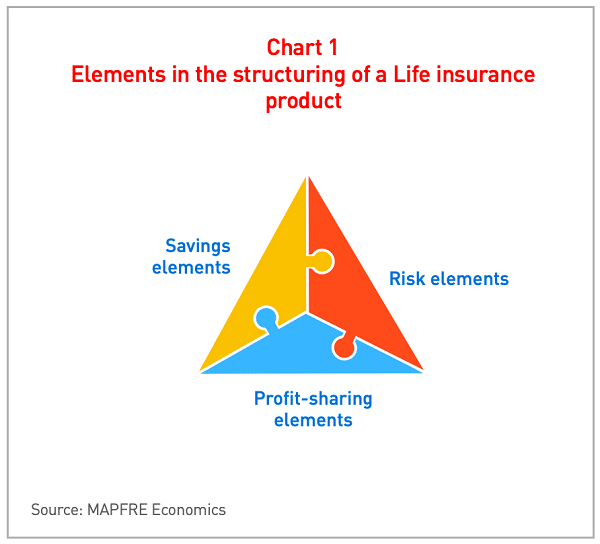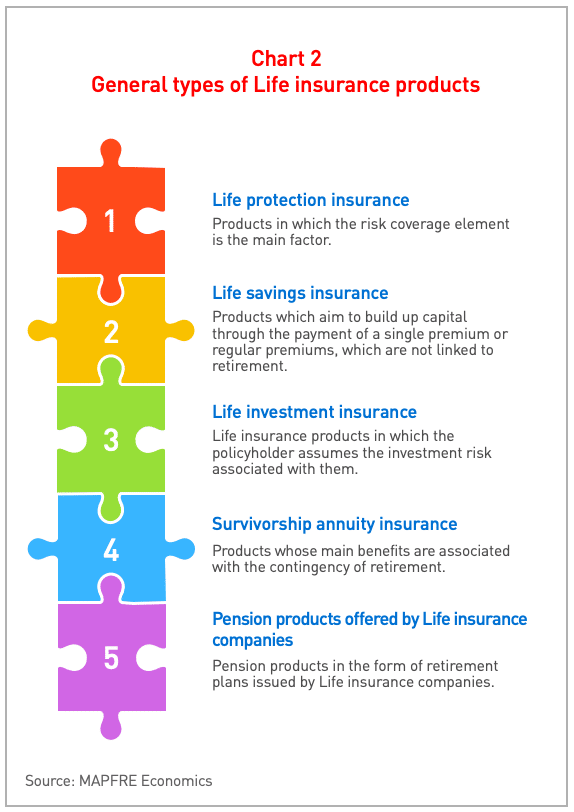Life insurance
Author: MAPFRE Economics
Summary of the report’s conclusions:
MAPFRE Economics
Elements for the development of life insurance
Madrid, Fundación MAPFRE, april 2020

Risk elements comprise the various forms of personal and/or family protection against the risk of death or the contingency of survival of the insured party. It also includes, where applicable, other complementary coverage such as for the risk of incapacity, disability or illness (whether a result of an accident or natural causes), granting protection in the form of capital, income, debt cancelation or financial compensation for the loss of revenue that may be incurred by such events.
Savings elements are those that involve (as a complement to risk protection) the possibility that the insured party or policyholder has access to a mechanism for establishing an amount of savings or income. Savings elements include: (i) deferred capital in the event of survival; (ii) immediate or deferred, fixed-term or whole life contingent income; (iii) financial income; (iv) reversion of income to other persons; (v) reimbursement of premiums; (vi) interest rate guarantees; (vii) redemption or reduction values and options; (viii) other financial guarantees and options; (ix) assumption of investment risk by the policyholder; and (x) loans on the value of the policy.
Profit-sharing elements are those in which, in addition to risk and savings elements, a certain percentage of the aggregate technical result of the insurance contract is established when there has been a surplus on the income statement of the respective policy, in favor of the policyholder. Profit-sharing elements include: (i) technical profits, (ii) financial profits without related accounts and (iii) financial results with related accounts (positive or negative).
The large number of different elements that may be incorporated into the process of structuring a Life insurance contract explains why there is such a wide variety of different products available on the market. However, these products can all be categorized into five groups depending on the weighting of the various elements incorporated into their structure (see Chart 2).

For more detail on the different Life insurance products available in the market, see the report compiled by MAPFRE Economics called Elements for the development of life insurance. The report is based on analysis of insurance markets in the United States, Mexico, Brazil, Spain, the United Kingdom, Italy, Japan and Hong Kong, and is available at the following link.




